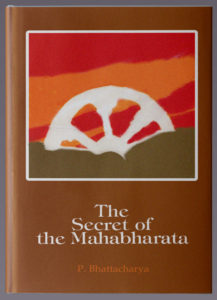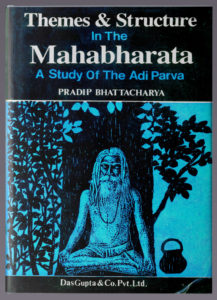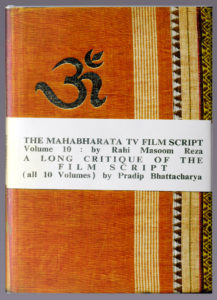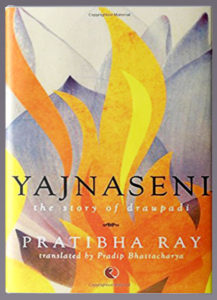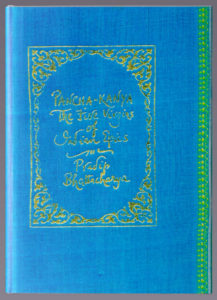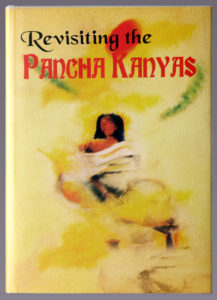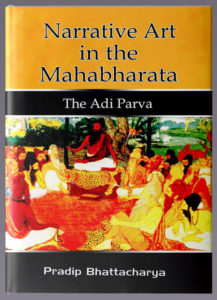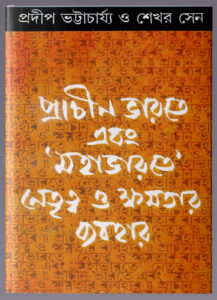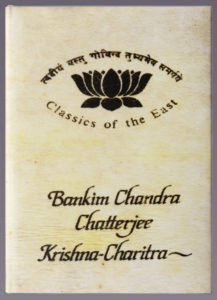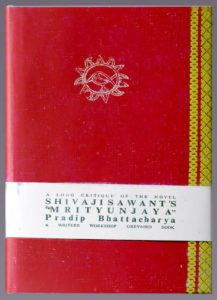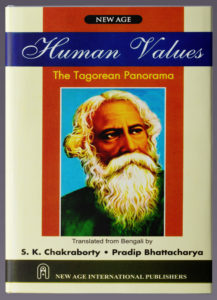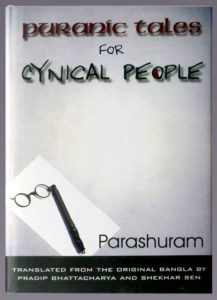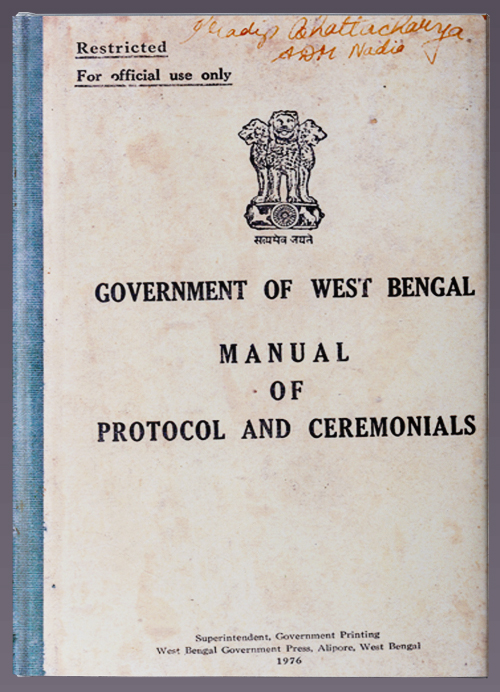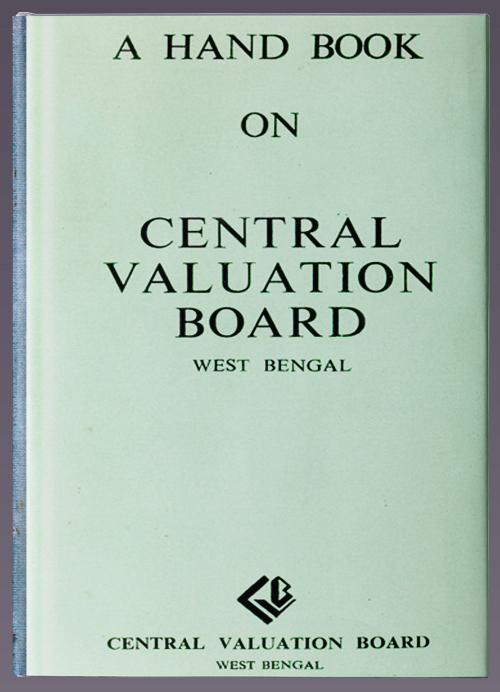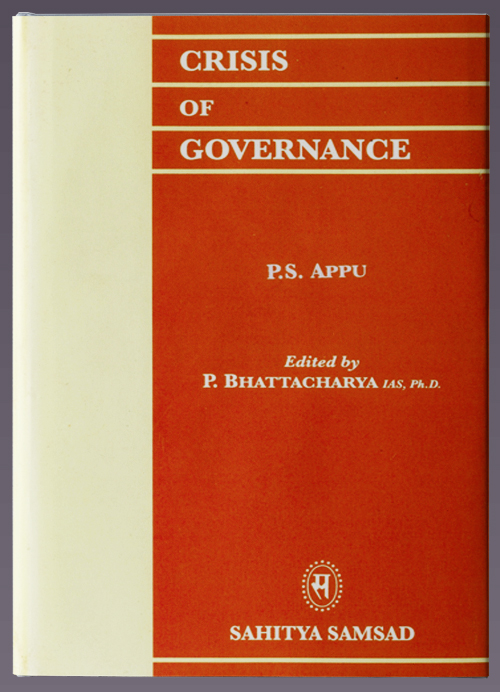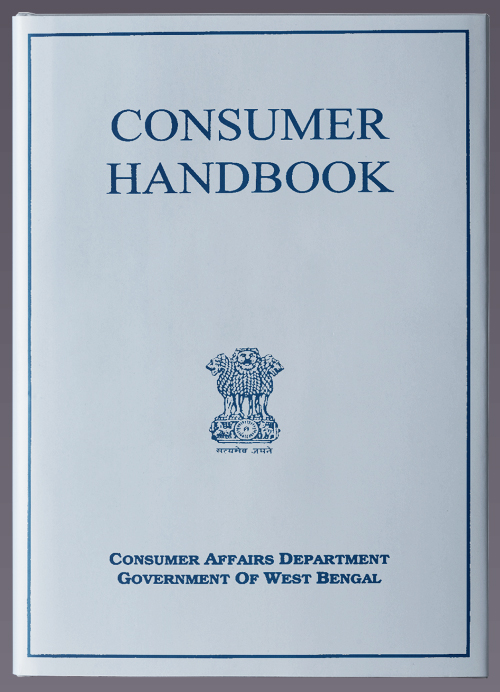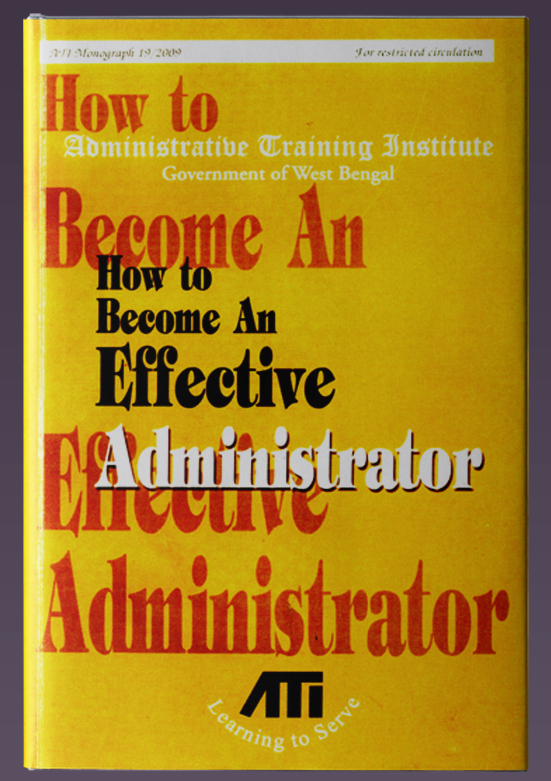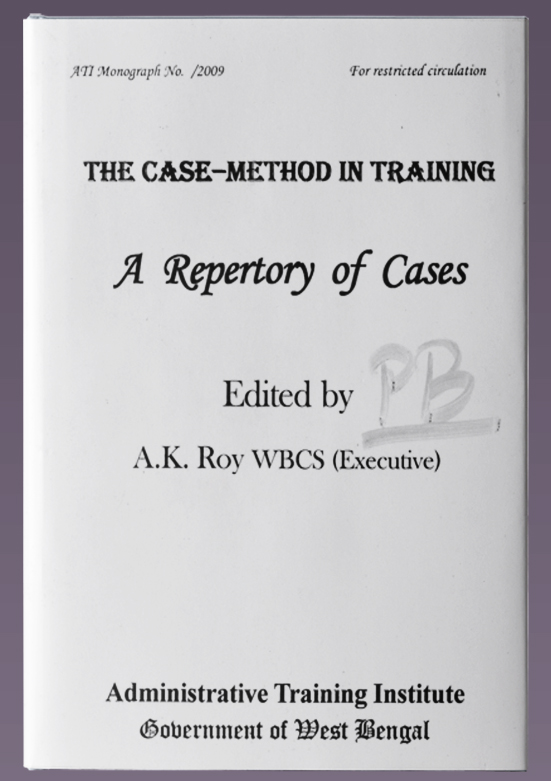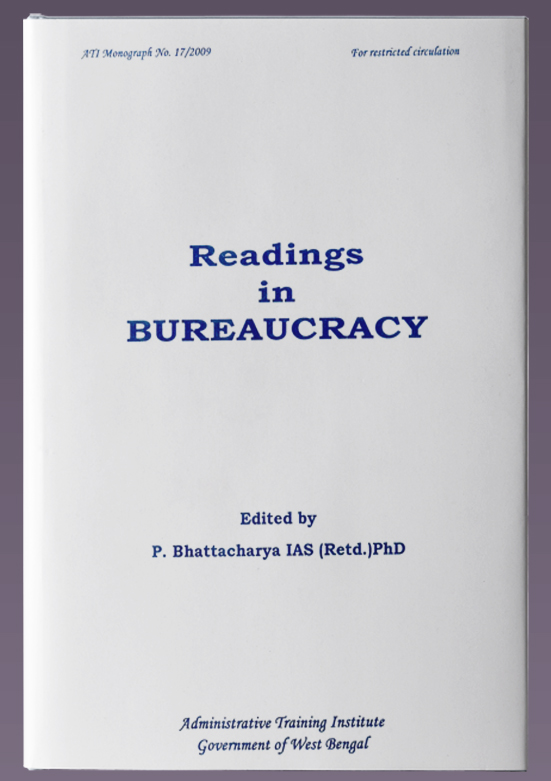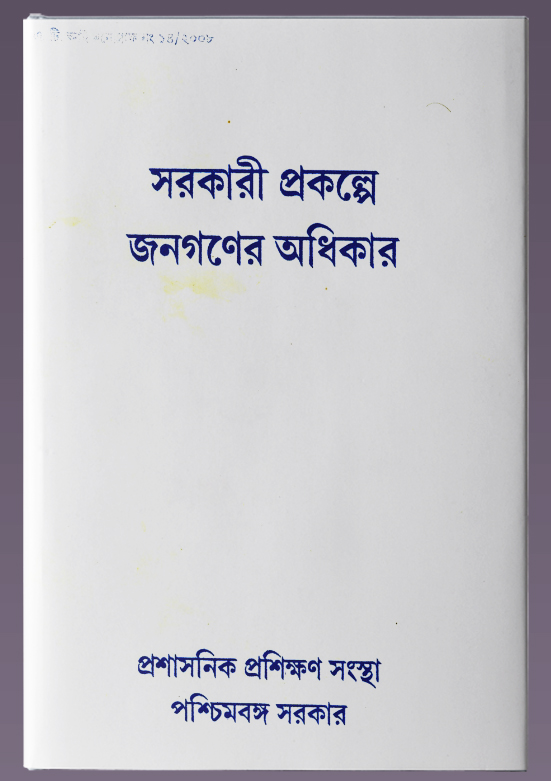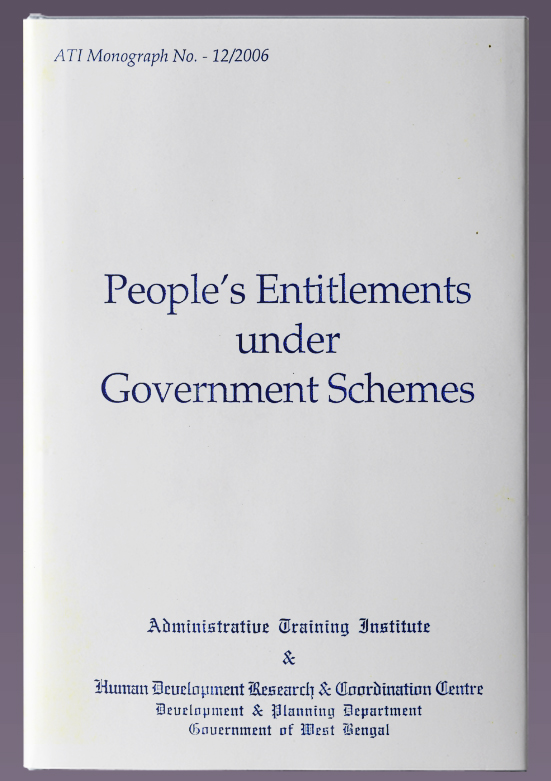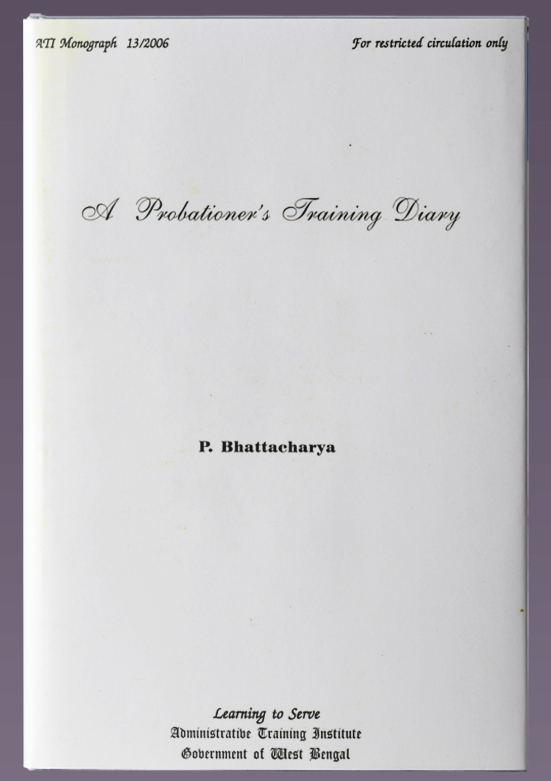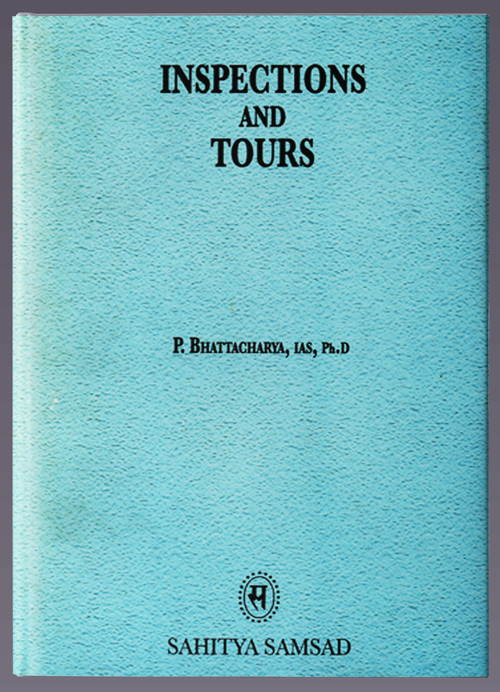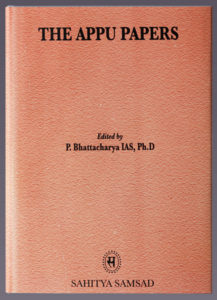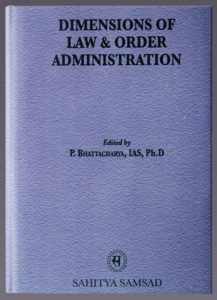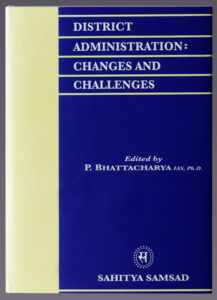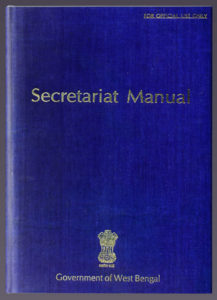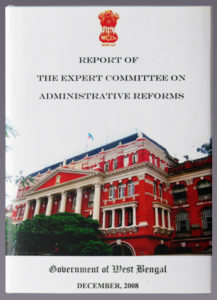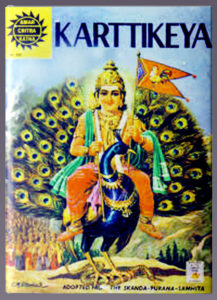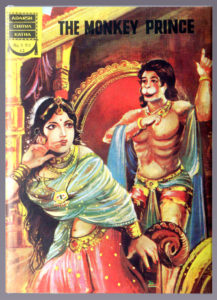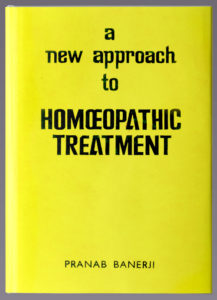Edited by S.K. Chakraborty and Pradip Bhattacharya (Oxford University Press, YMCA Library Building, Jai Singh Road, New Delhi 110 001. x + 453 pages. 2001. Rs. 595)
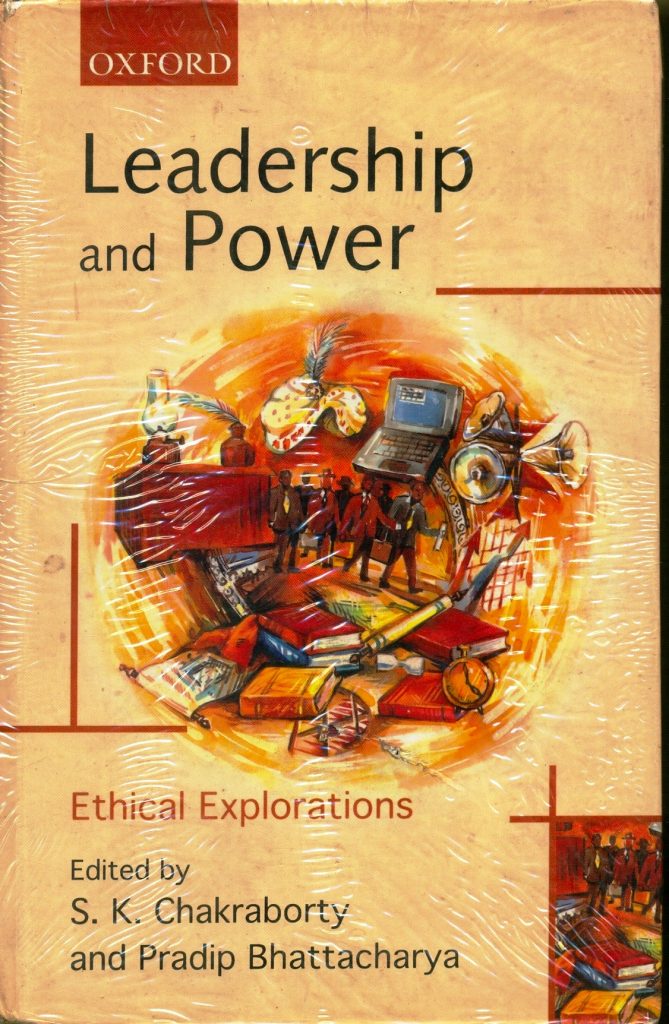
Ambitious. Perceptive. Timely. Academic. Unrealistic. Inspirational. Hold-all. One can relax in the easy chair mulling over ever so many epithets like this to describe Leadership and Power and yet fail to project its thrust. Maybe Marcuse has to be invoked for an echo: “In reality, evil triumphs, there are only islands of good to which one can escape only for short periods of time.”
But then, that has never been the way of the Indian ethos. From times immemorial, we have sustained a positive, life-affirming philosophy of action. And even when people act as if they are deaf, the Spirit of India continues to speak as the Bharata Savitri, so gently noted by Pradip Bhattacharya in the last page of the book:
“I raise my arms and I shout –
but no one listens!
From dharma comes success and pleasure:
why is dharma not practised?”
Dharma must be spoken, whether others react or not. The subconscious mind of India has continued to react to Dharma, hence we are able to speak of a civilization that has flourished for several millennia as the Vedic stream and the Sangham culture. The way of Dharma is undefinable, being sukshma. Yet we strive to follow it thanks to the garnered experiences of all our yesterdays. Mark the recurring phrase in our ancient texts: esha dharma sanatanah. One had to rise above the “me” all the time and work for the good of others, giving precedence to the Way as the Rishis said: dharmamaahu pradhaanam. The secular legends of our ancient past have all sought to define our day to day life by presenting the crisis that comes upon people as dharma-sankata and analysing how each person solves the problem in a different manner though all of them move within the broad framework of the sanatana dharma, the Ancient Way.
Though it is often said that today we are living in a highly competitive, complicated world, nothing has really changed when it comes to a man’s personal decision to act in a particular manner. Our ancients were helped by a crystalline faith in the phrase esha dharma sanatanah, and this Ancient Way continues to be a living guide.
S.K. Chakraborty and Pradip Bhattacharya have done well to rely heavily on the ancients for guidelines when power devolves in our hands and leadership is thrust upon us by the forces of history. Apart from independent essays on the Ramayana (C. Panduranga Bhatta) and the Mahabharata (Pradip Bhattacharya), the volume echoes to the itihasas quite often. Again we are never a page or two away from four gifted children of this Vedic-Upanishadic-Itihasic stream, Swami Vivekananda, Rabindranath Tagore, Sri Aurobindo and Mahatma Gandhi. Even Hiren Mukherjee goes on record with an unambiguous statement:
“…though I am an unbeliever, an atheist, for over sixty years now an unrepentant communist, somewhat allergic towards `spiritual’ themes, I believe the four great `illuminates’: Rabindranath Tagore, Swami Vivekananda, Mahatma Gandhi and Sri Aurobindo, whom the MCHV (Management Centre for Human Values) salutes, have been among the `makers’ of our civilization, `God-gifted organ-voices’ of our land, builders in different fashion, bridge between our immense past and the incalculable future.” (p. 90)
An unbeliever, perhaps, but Dr. Mukherjee is deeply immerged in the Indian pantheon to wonder why we lack in charity, “that we can weigh the sun and the stars but cannot weigh out bread to the hungry.” This is because of the mistaken notion that wealth is to be shunned (he quotes Shankara). The Ancient Way, however, did not reject money but wanted us to earn more, produce more (“Annnam bahu kurveeta”, says the Taittiriya) and simultaneously share it with all (the Tamil poet Tiruvalluvar calls this “oppuravu”). It is the “sharing” part which becomes a matter for argument. Do we ask for sharing in the manner of Tiruvalluvar’s Oppuravu or through bureaucratic mediation as in Socialism? Prof. Mukherjee writes:
“I have recently read in New Delhi’s weekly, Mainstream a piece by a former High Commissioner of India in London, Kuldip Nayar, now a member of Rajya Sabha, relating how when abroad he heard from knowledgeable people that there was no dearth of Non-Resident Indians who could, if they wished, finance out of their own hoarded resources half-a-dozen Five Year Plans!” (p. 97)
Have we not had enough of such Planning looking for models from other countries for a socialist heaven that speedily ended in a Permit-License Raj? No more of that, thank you. Better get back to the ingrained humanitarian values and have faith in ourselves instead of taking the hat around elsewhere. For this we have a reliable guide in Prof. Mukherjee himself, who expresses a lambent faith “that our youth, whatever fascination the frills and frivolities of modernity may hold, will not cease to dream dreams and see visions” and quotes young Dhruva to prove his point: swatstyastu vishvasya, varam na yachey (let the world have well-being, I ask for no boon).
Indeed almost all the contributors are confident of India’s yesterdays being the guiding lights of the nation’s tomorrows. R.K. Dasgupta who is not inspired by the “the managerial revolution” votes for soul power and assures us that “Vedantic monism is going to be the philosophy of the future for the whole world”, reminding one of Chakravarti Rajagopalachari who said: “The good in every man is an atom too, of measureless potential.”; Shashi Mishra leaps to the Feminine Principle and plunges into the Bhakti Movement and comes up with the hladini shakti of Radha to consider work and leisure as worship (Radha is in aradhana too); Guttorum Floistead puts the focus on family power which is in essence woman-power, like Dr. Dasgupta’s grandmother wielding the family finances; Arabinda Basu speaks of the secular nature of India’s sacred idiom as in the concept of the Purusharthas and the sacred/secular divide in the West (“Egoistic sacredness leads to abuse of power. Secularism is egoistic anyway.”); and M.V. Kamath expounds Swami Vivekananda’s maxim that power is generated through renunciation.
Since many of the contributors are well-known, there is nothing that is sharply new in their perspectives. But when there are surprises, it is a great pleasure to savour them. Rose McDonald discoursing on `The Anarchic Power of Money’ writes about the John Frum Movement in Tanna. The Tannese who had been colonised and forced to conform to a Christian theocracy and an imposed plantation economy rebelled after four decades of such rigorous transformatory practices. They abandoned the Church, withdrew from the schools and the plantations. Enough is enough they seemed to think as they went back en masse to their traditional ways of living and morality. The ultimate insult to the angry whites was when “the Tannese were to be seen all over the island throwing money into the sea.” The inspiration for this return to their paradisal past (though it was considered chaos by the whites) came from the prophet, John Frum. Christianity was not rejected but Christ was redefined as a Tannese by Frum:
“The ten commandments too were reinterprerted as having existed in customary belief long before the arrival of the white man bearing this supposedly `new’ message. But as John Frum encouraged acceptance of the whites’ rhetoric of integrity, the whites themselves, and their economic order, were to be wholeheartedly rejected. Money would not be the measure of man or the shaper of society in the new world.” (p. 253)
While Leadership and Power is busy exploring the past experiences and the present considerations to programme new ways to give the best of both for the good of mankind, necessarily the authors are overcome by memories of their professional lives. Never a dull moment here! Reading Hiten Bhaya, one could lose faith in the T-shirt one is wearing. Ah, the chicaneries of trade union leaders for a free plane ticket! According to Bhaya, corruption in Indian administration has a face of its own:
“…I was surprised to find some people whose very appearance betrayed them as political agents – touts to be more blunt. The chairman introduced them as the local office-bearers of the ruling party in the district where one of our plants was situated, and asked them to discuss their problem with me. What they were after was some contract that would enable the contractor to contribute to the party fund for a forthcoming election.”
Having never been a member of the Planning Commission or a Chairperson of any of those huge “new temples of India” and having done nothing more managerial than haggling over the price of vegetables in the local market as a thrifty housewife, I would love to get a description of the sartorial and other appurtenances that betrayed the face of corruption to Bhaya. Were they like the warped Dwarf-Titan in Sri Aurobindo’s Savitri, I wonder. Bhaya has a lot to reveal (without mentioning names) before coming to the conclusion that the right management of power lies is “strength of character to resist pressure for doing the wrong things, courage to support the right action, strength of will to control one’s own temporal desires and compassion for one’s colleagues and subordinates.” To put it pithily in the words of Tiruvalluvar:
“What determines the worth of the worthy?
The Light within, nothing else!”[i]
The shakti that rises from the “light within” is underscored by M.V. Kamath (Swami Vivekananda), Rajmohan Gandhi (Mahatma Gandhi), S.K. Chakraborty (Sri Aurobindo and Rabindranath Tagore) and Manoj Das (Sri Aurobindo), while contributors like C.R. Irani note that managing power in independent India is not all that easy. Where is the hero who can resist temptation? We are understandably unnerved by the manner in which Rajiv Gandhi tried to keep his vote banks intact, and how one had to show scant courtesy to law for one’s survival.
“Whether you have a particular kind of schooling, whether you have a phone or a ration card, almost everything depends on some grace and favour because the kind of socialism we have practised all these years, from Indira Gandhi downwards, meant two things: first create an artificial scarcity of every essential item and then exploit that scarcity.”
If a few survived, it was thanks to the “light within” emitting a soft glow in the words of a poor old airport loader, in the action of a harried customs officer. Judges, businessmen, politicians, aye, even newspapermen seem to possess such ugly feet of crumbly clay! And Irani can sentence somebody to life-long squirming by just a sentence: “Of course, Sonia Gandhi was protecting him.” The Italian connection. Power in the hands of such leaders, eh?
Yet another revelation from Irani is the difference in approach practised by the blocks (judiciary, business, government). They are all in it for the grabs but look at the way business is run. Biren Mukherjee is the exception that proves the style of business that thrives on tipping the essence of power in its favour:
“You want to evoke a response, you persuade people to do it. You don’t do it, like Indira Gandhi, pukdo, bandh kardo, grab him, lock him up! That is not the way to do it. But at the end of the day, if the law is not enforced, there is bound to be more crime and more breaches of laws.” (pp. 269-270)
But who cares? Ah, we do, say Chakraborty and Bhattacharya, giving out reasons for this compilation at a time when materialism, commercialisation of education and research have devoured almost the whole of traditional wisdom. Theirs is an attempt to examine the problem, make a list of the diseases and suggest remedies in the light of earlier experiences. The contributors were given wide freedom, and since they come from a variety of work-areas, Leadership and Power has shaped itself into a double-jointed inter-disciplinary tool. There is a charming variety of subjects and style. While Dasgupta is all Eliot and Goldsmith, Ambirajan peppers his paper on the private business organizations of India with R.H. Coase and Alfred Chandler, Champaka Basu and Francis Fukayama. Sugita Yoneyuki and Marie Thorston deal with the very difficult problem of “managing power among the vanquished” when cultural values have to be reformatted in terms of a “situational ethics”.
When seen in balance, the twenty-nine papers in the collection usually zero in on either political power or corporate power and discuss the tremendous pressure upon a leader in either of these areas. Lord Acton casts his shadow everywhere: “Power tends to corrupt”. So we should be careful lest we handover absolute power into a single person’s hand. If those who are leaders realise that “all power is a trust” (Disraeli) all should be well. V.R. Krishna Iyer’s language is ever a delight and his eloquent advocacy of Case-flow management in judiciary points to making India “a social justice nation”.
Primarily about corporate power, William Miller has pumped in a lot of inputs about the use of spiritual power in business. Rather, he attempts to bring business into spirituality and would have us view our work as a “spiritual autobahn”. In short his philosophy is one of “job-satisfaction” which can be achieved by following Gibran’s advice, quoted by Miller himself: “Work is love made visible. When you work with love, you bind yourself, and to one another, and to God.”
So many authors leading us on Himalayan treks helping us look at the blossoms and thorny bushes on the pathway, the gurgling stream flowing close by, the strips of water-falls that make you blink, the dangerous gorges on the sides and the beckoning peaks of achievement beyond. This elevating and practical adventure has been given a visual kick-start by Pradeep Nayak who has placed the leaders and their instruments of power in a capsule and whirled it into the space on the cover. Indeed, “Leadership and Power” sets a-whirl significant ideas and makes us think that transformation is possible.
Transformation of a misused present into a worthy future. Yad bhaavam tad bhavati.
Dr. Prema Nandakumar
[i] Translated by K.R. Srinivasa Iyengar



